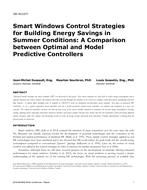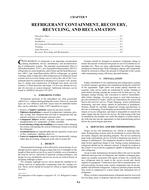Click here to purchase
Indoor thermal conditions have an impact on children’s ability to perform mental tasks requiring concentration. Current thermal comfort standards
explicitly state they should not apply to children occupants. Field studies conducted in classrooms have found that children’s predicted mean vote evaluated
from environmental and personal factors using equations from these standards differ significantly when compared to the result of surveys. Yet multiple
guidelines directing HVAC professionals as to the design of spaces dominated by children occupants still refer to these standards. This raises the question
as to whether and how these standards should be changed so that professionals may adequately evaluate the thermal comfort of children and select interior
environmental conditions that meet their needs. This paper is a first attempt at answering this question by analyzing the methods through which thermal
comfort evaluations of children have been performed in the past. We considered a set of thirty-four indoor thermal comfort studies from the literature to
evaluate the methods used in measuring, calculating, and estimating child specific factors used in analytical thermal comfort calculations. We specifically
focus on the methods used in the considered papers to adjust the metabolic rates of children and to estimate children’s clothing insulation factors, as well as
the characteristics and positions of sensors used to measure environmental factors. It was found that the placement of environmental sensors was often done
either at the recommended heights for adults, or at other values unrelated to the height of children and their positions in the space. No consensus was found
as to the method to select metabolic rate values for children. Estimation of clothing insulation values based on outdoor air temperature was found to
overestimate the actual clothing level of children in the considered studies. None of the methods considered result in a correct prediction of the thermal sensation
of children. Before the applicability of the PMV method to children can be confirmed or denied, consensus is needed on how the factors that contribute to its
calculation should be measured for children.
Product Details
- Published:
- 2021
- Number of Pages:
- 11
- Units of Measure:
- Dual
- File Size:
- 1 file , 1.7 MB
- Product Code(s):
- D-VC-21A-C066
- Note:
- This product is unavailable in Russia, Belarus


